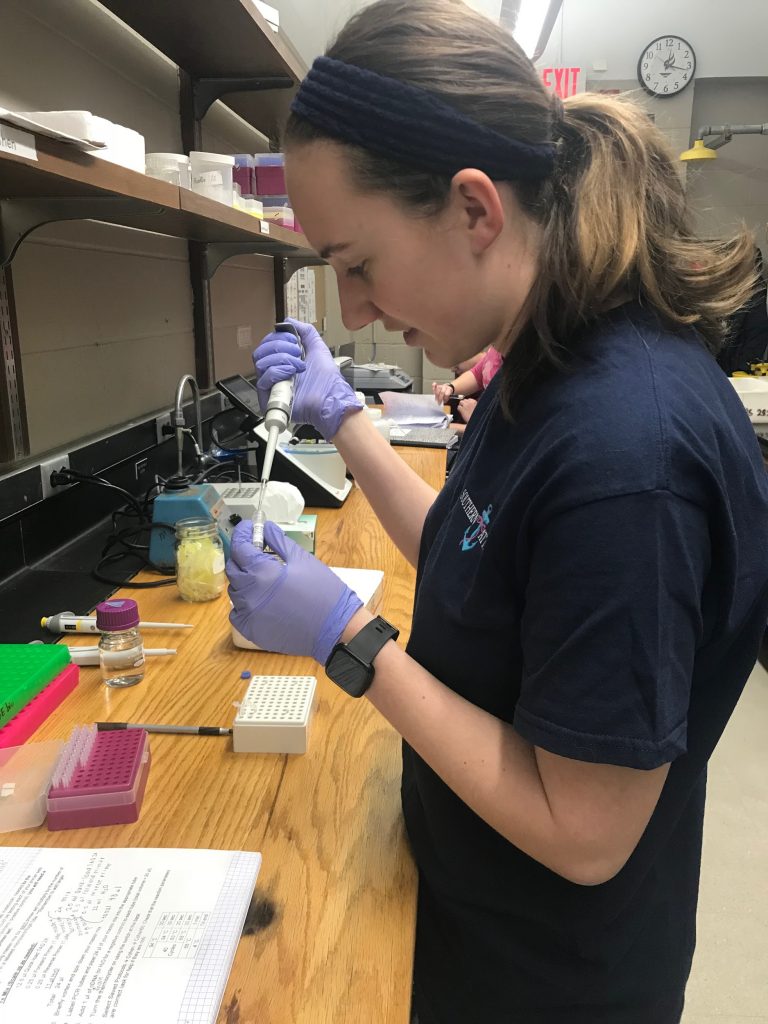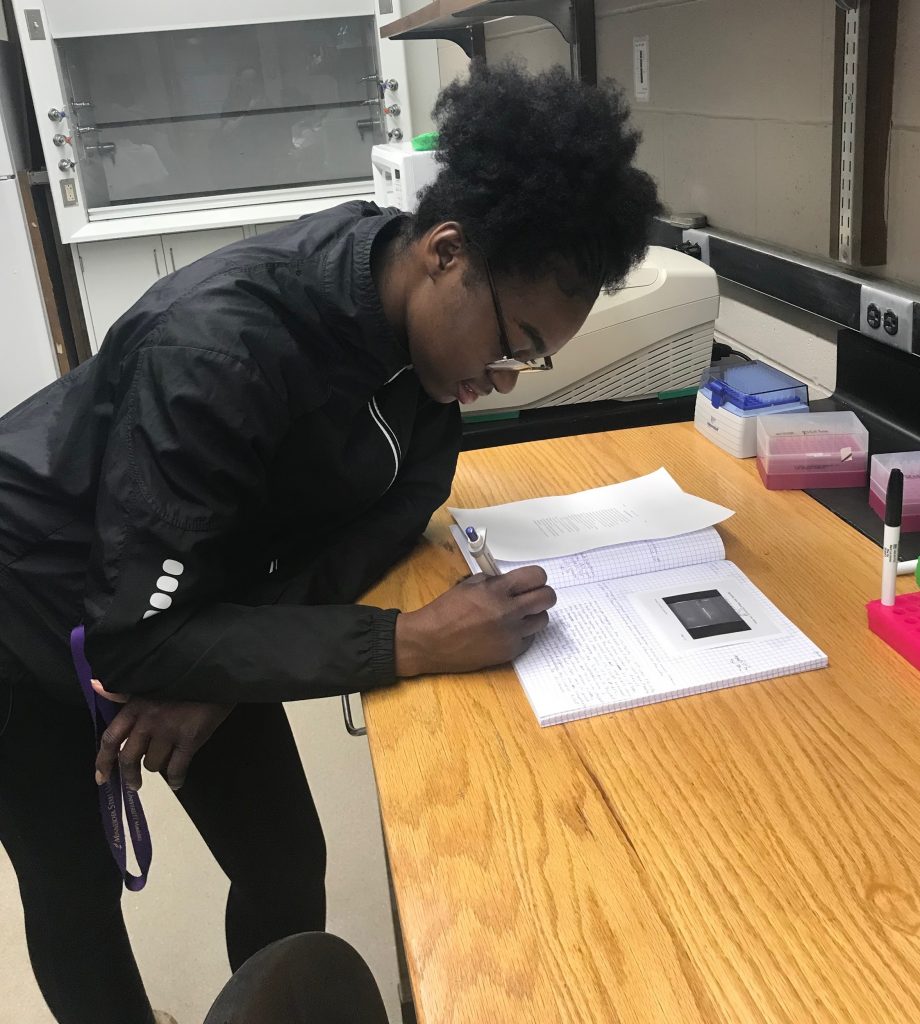1 MARCH 2019
By Bola Ogunlana & Makenzie Reed
Introduction
Male Anolis carolinensis have behavioral differences during mating seasons and non-mating seasons in the presence of females. The males exhibit and extend the dewlap and move their heads in an upward and downward motion when in the presence of another male anole during the mating season. The mating season is usually from the month of April and ends around September for the Anolis carolinensis. As novice researchers we examined possible genes that may have a role in this protective behavior displayed by the anoles. The Melatonin receptor 1A (MTNR1A), located in the brain of the anole could play a role in controlling reproductive behaviors which is what we’re researching.
Our Process
To start off our research, we picked a gene that we wanted to work with. The gene that we picked was the MTNR1A gene. After this, we picked three primer sets so that we could try to amplify this specific section of DNA. The three primer sets we created had to fit specific requirements in order to increase of chances of success when it came to amplifying the gene.

Soon after the three primer sets came in, we ran our first PCR and gel electrophoresis and gel imaging. As it was our first time doing all of these steps, the results were not what we expected. So, we tried again. Our second try turned out a lot better than our first and we were able to do an analysis of what worked and what didn’t.
Subsequently, we were not happy with what we got in our PCR. We could see primer dimers, where the primer is binding to itself instead of the gene, in a few of the primer sets. Because we did not want primer dimers, we decided that we would troubleshoot our reaction and see if we could get a better result. To do this, we ran a PCR for all three of our primer sets at a temperature gradient. The temperatures were in a range between 58°C – 68°C. After the PCR was complete, we ran a gel to get an image of what the PCR looked like. We found that we could get rid of the primer dimers at several of the temperatures for each of the primer sets, but our best result was with our primer set 1 at 60 degrees Celsius, coincidently one of the original PCRs that we ran at the start of the lab.

Now that we have found our best result, our next step for the next few weeks is to run a PCR cleanup. For this, we will run a PCR at 60°C for our Primer set 1. Once this PCR reaction is complete, we will allocate 10 microliters of the PCR to run a gel, to make sure that our PCR was not contaminated in the process. Then, we’ll clean the rest of the 15 microliters from the PCR and clean it by using a set of separate buffers and spinning it down using a centrifuge. After it is clean, we will measure the DNA concentration and purity to make sure that our sample has not been contaminated. If the numbers are what they are expected to be, then we will send this tube off for sequencing to ensure that we are amplifying the right genes. Once we get a confirmation that we are amplifying the right genes, we can then begin the process of RNA extraction.

